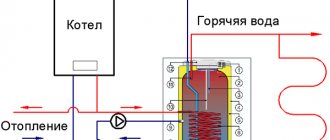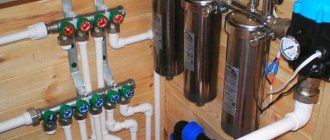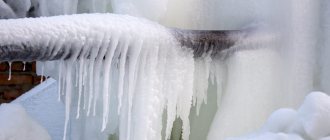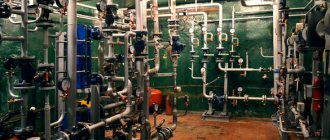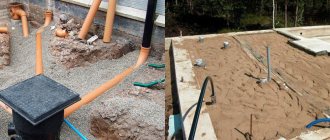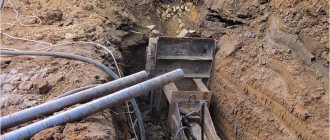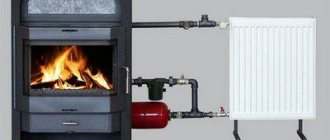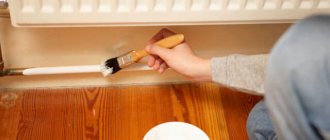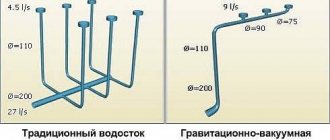It is difficult to call a cottage in which there is no water supply modern and comfortable for living. Walking with a bucket to a well or pump is something out of fairy tales or old grandmother's stories today. There must be running water in a private home. And you can do it yourself by organizing a water supply from the same well. The situation is even simpler when it is possible to connect to the village centralized network. In this case, it is enough to install only the internal part of the water supply system.
Water supply systems
Water supply to country houses is:
- centralized;
- decentralized.
In the first option, the water source is the water supply network common to the entire village. To connect a private home to it, you must contact the resource supply organization and obtain specifications for connection. The subsequent insertion into the centralized pipeline will be carried out by the installers of this company, and the distribution of the water supply through the residential building can be done independently.
Home water supply options
In the second option, water enters the house from a well, borehole or river. If such water intake is done on your own property, then you will not need to obtain permits or coordinate anything with government agencies. However, all issues of quality and compliance of the life-giving moisture entering the cottage fall on the shoulders of the home owner.
Plumbing system in a private house
The plumbing system of a private house consists of an external and an internal part. The first includes a street water supply from a water intake or village network and directly a well or well with a pump (if this is a decentralized autonomous option). The second includes the cold water and hot water pipelines located in the house, as well as filters, pumps, fittings and taps.
External part of the water supply system of a private house
How to develop a plumbing diagram
In order for everything to work out correctly in the end, before installing the water supply it is necessary to carefully work out the layout of its installation on the street and its wiring in the cottage. If this project is done correctly, it will avoid many problems during installation work and subsequent operation of the assembled water supply system.
Water supply scheme for a private house
When developing such a water supply scheme, the following is calculated:
- number of water supply points in the house;
- the need and number of collectors;
- pump power and water heater capacity;
- pipe sizes;
- characteristics of shut-off valves.
Plus, you select the option of pipe routing (collector or sequential) and the placement of all elements of the water supply system in a private house. At first glance, it is easier to install the same electrical wiring in an apartment or a ventilation system. However, both have their own nuances. And even with the slightest mistakes, there will be many problems in all cases.
Step-by-step work algorithm
How to install water in apartments? To replace the old water supply system in an apartment, you can turn to a professional and you will not have to choose the material, wiring diagram and install the system, however, such services are quite expensive. In turn, organizing water distribution in an apartment with your own hands requires careful compliance with building codes and regulations. This event is divided into several main stages:
First, experts recommend preparing a plan for future work. Such a plan should include two main points:
- choice of material. Many people are interested in one question: which pipes to choose for water supply? Pipes can be made of metal, metal-plastic or plastic. Each material has its own characteristics, which must be carefully studied so as not to encounter unexpected problems in the future. Which material is better suited for installing water pipes: polypropylene or metal-plastic? Metal-plastic pipes are most suitable for self-distributing water supply. Installing metal-plastic communications is quite simple, so even a beginner can do this work. In any case, polypropylene or metal-plastic are ideal for water pipes;
- choosing a water distribution scheme for the apartment. The installation scheme for water supply communications is determined depending on the type of multi-story building. Today, the most popular are two schemes: serial and parallel. A sequential wiring diagram is used if the water pressure in the apartment is always stable, however, this is extremely rare. Therefore, most often for the installation of a water supply structure, the second option is used, namely: parallel or collector distribution of water supply and sewerage.
The collector distribution system is a modern and more practical option; in such a water supply the pressure will be stable
Note! The main advantage of collector water distribution in an apartment is the ability to control the pressure of the working fluid in individual water intake sources.
Calculation of fittings and other auxiliary elements, as well as the pipeline cross-section. It is recommended to install shut-off valves in front of each water intake source. It is important to remember that the cross-sectional area of the pipes should be smaller than that of the connecting elements.
The fourth point of the diagram includes a list of tools necessary for wiring.
Dismantling old communications and laying new ones. When dismantling an old structure, it is very important to ensure that the cross-sectional area of all outlets and pipes is observed, otherwise you will have to use special adapter couplings.
As a rule, in standard apartments the rooms where the plumbing structures are located have a limited area. In this regard, it is recommended to give preference to the most compact option for laying a water supply. As mentioned above, pipes made of different materials can be used for water supply in an apartment.
Features of pipe selection
Pipes for home water supply can be made of plastic, steel, copper or metal-plastic. Copper will cost the most. But pipelines made from it are not subject to corrosion and deformation during heating (cooling), and they are also not afraid of impurities in water and water hammer.
The easiest way to install plastic options, however, high and low temperatures are strictly contraindicated for them. It is recommended to choose plastic for installation inside the house, and choose steel for the street. Steel pipes are more difficult to connect (welding is required). But they are more reliable, although they are susceptible to rust.
The internal diameter of the pipes is selected based on the estimated volume of water consumption by plumbing fixtures connected to a specific section of the water supply system. In this case, a tubular product with an internal cross-section of 25 mm is capable of flowing about 30 l/min, and with a cross-section of 32 mm – about 50 l/min. Typically, these two sizes are most often chosen for installing an in-house plumbing system. If you take pipes of a smaller diameter, they will make noise, since to increase their throughput you will have to increase the water pressure.
Types of pipes for water supply
To install an external section of water supply with your own hands, they are usually taken from a pipe with thermal insulation with a cross-section of 32 mm. This pipeline will lie in the ground, so special attention must be paid to its insulation. He shouldn't freeze in the winter.
Standard solutions
There are recommendations:
- usual pipeline diameter is 10 and 15 mm;
- the riser will require a little more - 25.
You need to know: the purchased products are not created by jewelers, and “10 mm” pipes will easily turn out to be a couple of millimeters larger. Be sure to be guided by such a parameter as the thickness of the walls: you need to choose the diameter exactly inside (for this you need to subtract the wall thickness from the total) so that all the fittings fit!
The higher the level of complexity of future plumbing work in a household, the larger the diameter of all pipes, both long and short, should be. When a “complex” pipeline with many turning points, joints and expected pressure surges is expected, it is worth insuring yourself by increasing the diameter. You should also definitely take into account the maximum values of both pressure and temperature in your water supply so that it does not burst from the first water hammer.
The savings here are unjustified. Additional advice: in order for the plumbing system to perform flawlessly and be reliable in operation, you need to select high-quality products. This applies to pipes and small elements (fittings and couplings). It would be a shame to “ruin” a proven system with cheap fittings.
Recommendations for system installation
Installing water supply in a cottage in seven steps:
- Marking pipe routing, as well as installation locations for equipment and plumbing.
- Making holes in the walls for the pipelines to be laid.
- Connecting pipes using fittings or welding.
- Connecting shut-off valves.
- Installation of a water heater (boiler) and pumps with their connection to the assembled water supply system.
- Installation of plumbing.
- Starting the water and checking for leaks.
It is recommended to leave about 15–20 mm of empty space between the wall and the pipe. This will make it easier to repair the plumbing later if necessary. Also, each branch from the riser to the plumbing should have its own shut-off valve. This way, in the event of an emergency, you won’t have to turn off all the water in a private house, leaving household members completely without it for several hours or even a couple of days.
Operating principles and useful tips
In order for the system to work flawlessly, it is important to know how to install plumbing in a private house with your own hands correctly. This concept can include both the basic principles regulated by building codes and rules, as well as some nuances and subtleties known to experienced craftsmen.
- Ideally, the pipeline should not pass through building structures, however, in practice, creating such a circuit is often impossible or impractical. If it is necessary to conduct communications through the wall, the pipe must be placed in a protective cup.
- Despite the fact that the owner of the house almost always wants to get maximum free space and to do this, “press” the pipeline against the wall, there must be a gap of at least 25 mm between the building structures and the communications running parallel to them for easy repair work. The inner corner requires a distance of 40 mm, and the outer corner 15 mm.
- If there are drain valves on the pipelines or hydraulic accumulator, a slight slope is made in their direction.
- The most convenient way to fix the pipeline to the walls is with special clips. You can choose single or double devices; in any case, the distance between them should be about 2 meters.
When deciding how to install water in a private house, remember that a well-executed internal water supply system has characteristic differences:
- Minimum joints and adapters. This improves the reliability and efficiency of the system.
- All connections are made in strict accordance with the installation technology of this particular type of pipe.
- Availability of valves or shut-off valves in critical areas of the system and at connection points.
- A minimum number of not very reliable flexible connection sections (hose connections), which are most vulnerable to pressure changes.
Connecting the pumping station
The pump or pumping station is installed in a caisson above the well, in the basement or in an outbuilding next to the well. This equipment is sensitive to severe frosts, so it should be located in an insulated, or even better, heated place.
Otherwise, there is a risk that the water inside it and nearby pipes will simply freeze. It is also possible to install a submersible pump directly into the well.
However, pressure switches and other automation will still require some kind of insulated space in the borehole head or room in the house for them to work correctly.
Schematic diagram of pumping station connection
Different fluid supply principles
You can install cold and hot water supply using one of 2 methods, which we will discuss below.
SF-mix manual up to 0.8 m3/h
AMETHYST - 02 M up to 2 cubic meters/day.
Aeration unit AS-1054 VO-90
"Blind" wiring
A dead end is installed at the last water intake mark - the liquid does not flow further. This is economical in terms of finances and space. At the extreme node, water will appear with a delay, and will flow into the tap only after it touches the plug.
Circulating closed system
The moisture here moves in circles all the time at the same temperature. The user will receive it immediately. This is best used for hot water supply to avoid serious temperature changes. Combined techniques can be used.
Hydraulic accumulator
To ensure that the pressure in the cottage’s autonomous water supply system is always constant, a hydraulic accumulator is included with the pump. It not only allows you to control the pressure in the taps, but also reduces wear on pumping equipment. The latter turns on less often. This only happens to fill the accumulator tank, and not every time you open the faucet valve in the kitchen.
If you don’t want to install a hydraulic accumulator, then you can get by with a regular storage tank of 0.5–1 cubic meter installed in the attic. This scheme allows you to do without complex and expensive equipment. At the same time, the pressure in the taps remains quite stable and constant.
Connection diagram for hydraulic accumulator
Types of wells
There are only 2 main subspecies. In the first case, you can drill an artesian, which has a depth of up to 150 meters, or a regular one, “into the sand.” The second one does not go deeper than 15-50 meters.
They also differ in the time they can be used. The former last up to 50 years, and the latter usually no more than 20 years.
Water purification
If the quality of the water leaves much to be desired, then the water supply will have to be supplemented with a water purification system. At a minimum, you need a coarse filter. It will remove grains of sand and other large suspended particles from the water flow.
Additional filters are installed after the water has been analyzed for the chemical composition of the impurities present in it. If the content of iron or calcium is high, some treatment devices will be needed, and with increased hardness, others will be needed.
Water purification scheme in a private house
How not to break the law
To connect to a centralized water supply, you will have to prepare a whole bunch of documents and obtain technical conditions for connection. Without these pieces of paper you cannot cut into a pipe without permission. This will be discovered sooner or later and considerable fines will follow for arbitrariness and water consumption. Here, all connection issues should be resolved exclusively through the organization that controls the water utility.
Types of water sources for a private home
With a well and a borehole, the situation is radically different. There is no need to collect permit papers here. You can organize such a water intake on your site at any time. Moreover, it is not even necessary to invite specialists to dig a well. If you know exactly at what depth the water lies, then getting to it with your own hands if you have the skills to handle a shovel and follow simple rules will not be difficult.
Connection diagram for water supply to a private house with artesian water
The only limitation on the well is if it is made deep artesian. In this case, there is no way without permission. Such water withdrawal requires approval from government agencies. This sewerage installation in a private house can be done in any way without control from the authorities. This will not work with an artesian well.


